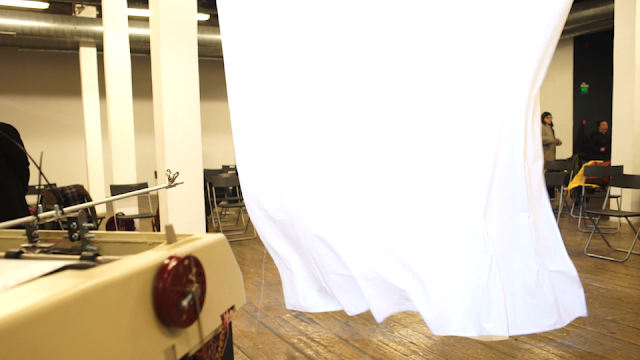The manifold universe of Gölge Oyunu (shadow theatre) or Karagöz theatre was a guiding
topic for our research in Turkey. We embarked on journeys through
Istanbul, Bursa and Adana, re-performing German orientalists, who wrote a
century ago compendiums about Karagöz theatre. These academics
struggled to understand and tame the carnivalesque humour and polyphonic
language of Karagöz.
Through encounters with colleagues in Istanbul, the artists learned
about the development of the once prominent markers within late Ottoman
Karagöz performances; cultural diversity and the struggle for identity.
In their performance at Depo they follow the idea of “hayal” present
in Karagöz theatre: illusion as a theatre form. We propose to link the
illusion of “shadows” on the screen to the delusion of race and nation,
radically counterpointing the choreography of a historic Karagöz
collection with texts from the same era of the German Empire. Our Hayal Mashine operated during the performance, pulls
strings, veil, projections and text into a trembling scenario, maybe
illuminating the void left after the cast was cleaned.
The work is dedicated to the idea of a cast dearly missed on today’s
TV, on the theatre stages, in advertisement and most movies in modern
nation states.
Duration: 30 min, performance, mixed media and video.
Language: Mostly English, some German, some Turkish.
Special thanks to:
Ahmet Ağaoğlu, Ahmet Akşit,
Gülçin Aksoy, Esra And, Veli Başyiğit, Alpay Ekler, Peri Efe, Barbaros
Gülümser, Hasan Hüseyin Karabağ, Ünver Oral, Sevim Sancaktar, Nazlı
Ümit, Archivist of the Karagöz Collection of the Atatürk Library, PASAJ,
SiS collective and all people from Depo Asli Cetinkaya, Asena Günal, Gülsah Mursaoglu, Mert Sarisu and more) and all people from Unima Istanbul.
Berlin Senate for Culture and Europe financed the residency at Depo, Centre for Contemporary Art and Debate.









